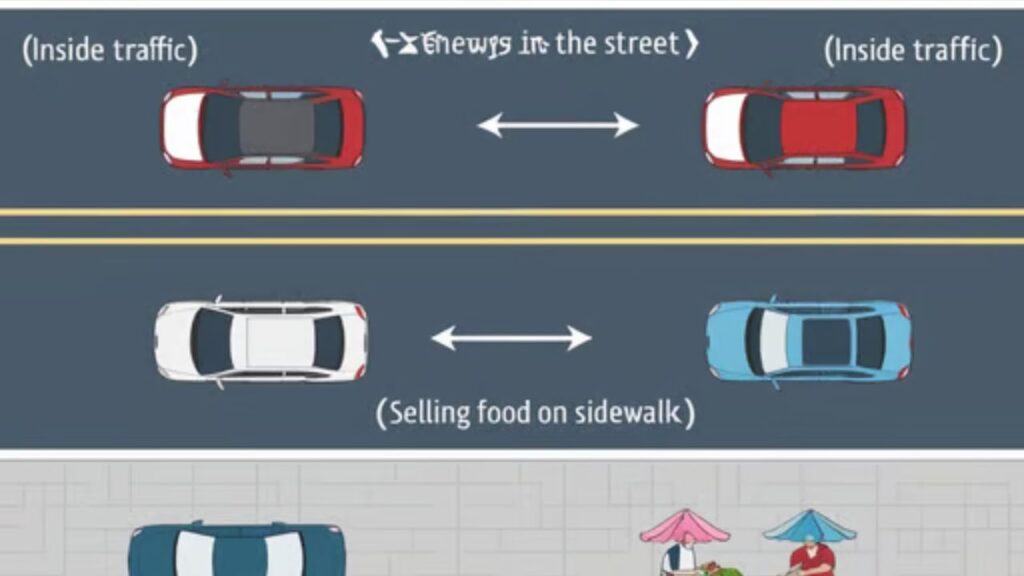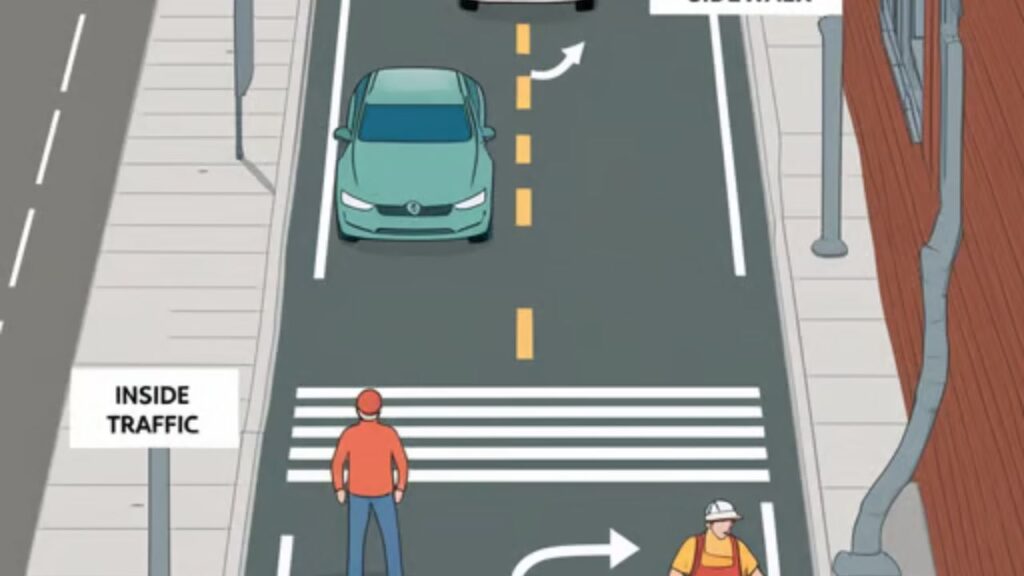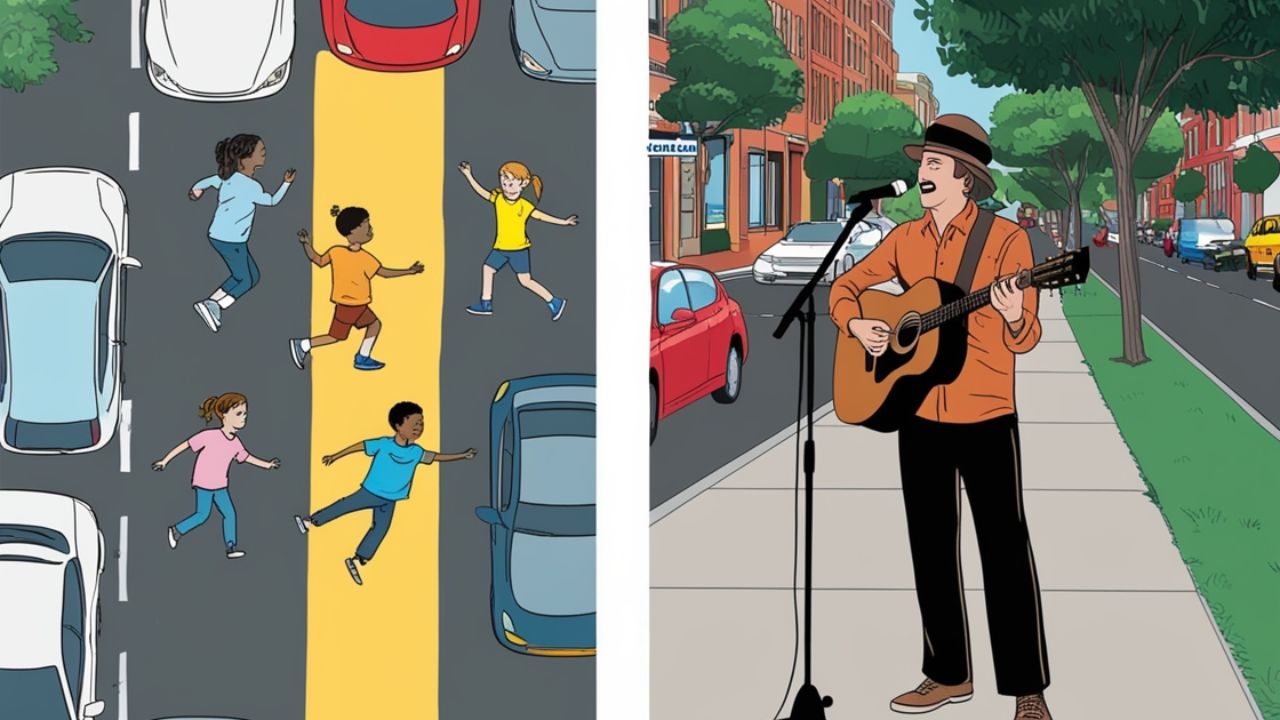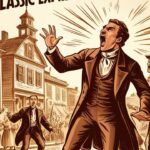In British English, people often say in the street when they talk about children playing or people walking. It means they are inside the road area where cars normally go.
In American English, people usually say on the street. It describes someone near the street, like walking on the sidewalk, living outside, or doing activities connected with the street.
The choice between in the street vs. on the street shows the difference in culture. Both ways are correct, but you must learn when to use each one clearly.
Why the Preposition You Choose Actually Matters
The preposition you use can change the meaning of a sentence. Words like in the street and on the street show different ideas, even when they look almost the same.
Using the right preposition makes your English clear and correct. It helps people understand your meaning quickly. Small words like in and on can make a big difference.
Quick Comparison: “In the Street” vs. “On the Street”
| Phrase | Meaning | Common Usage Contexts |
| In the street | Physically within the street, possibly obstructing traffic | Protests, accidents, children playing |
| On the street | Located near, along, or associated with street activity | Homelessness, street musicians, patrols |
What Does “In the Street” Really Mean?

The phrase in the street means being inside the road where cars usually move. It shows people, animals, or objects standing or playing in the traffic space.
When someone is in the street, it often suggests risk or danger. Examples include children playing with a ball, protesters marching together, or fallen branches lying across the road.
Common Uses of “In the Street”:
- Children or pets playing in the street, often showing risk from traffic.
- Protesters or large groups marching in the street, blocking vehicles.
- Objects or debris lying in the street after storms or accidents.
Example Sentences:
- The ball rolled in the street, and the dog ran after it.
- Many people were shouting loudly in the street during the protest.
- A broken tree branch was lying in the street after the storm.
Visual Cue:
A visual cue for in the street is imagining someone standing where cars normally drive. This picture helps you understand that the person or object is inside the roadway space.
Key Insight:
The key insight of in the street is that it shows someone or something inside the road space. It often gives a feeling of danger, movement, or interruption.
What Does “On the Street” Mean? A Closer Look
- On the street means being near or along the street, often on sidewalks or corners.
- It describes street performers, vendors, or activities happening close to the road.
- The phrase shows someone living outside, often linked with homelessness.
- Police officers or workers are sometimes said to be on the street while doing their jobs.
- It can be metaphorical, like “word on the street,” meaning shared news or gossip.
See also : Mashable Connections Hints: Solve NYT Connections Daily
Common Uses of “On the Street”:
- People living on the street without homes.
- Musicians or performers playing instruments on the street for money.
- Food vendors selling snacks on the street to passersby.
- Police officers patrolling on the street for safety.
- Using phrases like “word on the street” to share news or gossip.
Example Sentences:
- She sings every evening on the street to earn some money.
- Many families are sadly living on the street without proper shelter.
- Food trucks stand on the street selling tasty snacks to people.
- Police officers were busy on the street during the festival.
- The phrase “word on the street” means people are sharing news.
Broader Meanings:
- On the street can describe everyday public life and activity.
- It can mean belonging to street culture, like music or fashion.
- The phrase shows street lifestyle, often linked with survival and toughness.
- It’s used in expressions like “street credibility” or “street smarts.”
- “Word on the street” means news, talk, or common opinion among people.
Diagram: “In the Street” vs. “On the Street”
- In the street = inside the road where cars usually move.
- On the street = near the road, like sidewalk or curb.
- In the street often shows danger, traffic, or blockage.
- On the street shows daily life, work, or living outside.
- In the street vs. On the street helps picture location and safety clearly.
Grammatical Guidelines for Using “In” vs. “On” with Streets
Use “in the street” when:
- When describing children or pets playing in the street where cars pass.
- When talking about protesters marching in the street during rallies.
- When objects, like trash or branches, are lying in the street.
- When an accident happens in the street and blocks traffic.
- When vehicles are moving or parked wrongly in the street.
Use “on the street” when:
- When describing people living on the street without homes.
- When talking about performers or musicians playing on the street.
- When food vendors or sellers are working on the street.
- When police officers or workers are active on the street.
- When using phrases like “word on the street” to mean gossip or news.
Verb Influence on Preposition Choice
| Verb | Correct Preposition | Example |
| Play | In | “The kids were playing in the street.” |
| Sleep | On | “They slept on the street.” |
| March | In | “They marched in the street.” |
| Perform | On | “He performed on the street.” |
| Drive | In | “They were driving in the street.” |
| Sell | On | “Vendors sell snacks on the street.” |
Can “In the Street” and “On the Street” Be Used Interchangeably? Sometimes – but Be Careful
Sometimes in the street and on the street may look similar, but they don’t always mean the same. The choice changes the picture, so using the correct phrase is important.
For example, children play in the street when inside the road, but musicians perform on the street near sidewalks. Knowing the difference helps you speak and write with clear meaning.
What About “At the Street”? Is That Ever Correct?

- At the street is less common but still correct in some cases.
- It usually describes a point or place near the street.
- People may say “meet me at the street corner.”
- It works for giving directions or showing a fixed location.
- It shouldn’t replace in the street or on the street, which have different meanings.
Examples:
- Let’s meet at the street corner after school.
- A bus stop is located at the street near the park.
- Children were waiting at the street light before crossing.
- I saw my friend standing at the street near the library.
- There’s a shop right at the street where the road begins.
When to Avoid It:
- Don’t use at the street to describe someone inside the roadway.
- Avoid saying at the street when talking about street performers.
- Don’t replace on the street with at the street for homelessness.
- Avoid at the street when describing accidents in traffic lanes.
- Don’t use at the street for general street activity or daily life.
British vs. American English: Key Differences in Preposition Use
| Context | American English | British English |
| Children playing | On the street | In the street |
| Homelessness | On the street | On the street |
| Physical presence among traffic | In the street | In the street |
| General street activity | On the street | On the street |
Real-Life Examples from News and Pop Culture
Headlines:
- “Thousands Protest in the Street Against New Laws”
- “More Families Forced to Live on the Street This Winter”
- “Children Injured While Playing in the Street”
- “Musicians Perform on the Street to Spread Joy”
- “Word on the Street Points to Big Election Changes”
See also : Cart vs Kart: Key Differences Explained Simply
Pop Culture References:
- “Dancing in the Street” – a famous Motown song by Martha and the Vandellas.
- “Word on the Street” – a common phrase used in movies and music.
- Superheroes often battle villains in the street in comic books.
- Street artists painting murals on the street appear in many films.
- Rap songs often mention life on the street to show real experiences.
Summary Table: When to Use “In,” “On,” or “At” with Streets
| Preposition | Use Case | Example |
| In | Physical location inside the street | “A child stood in the street.” |
| On | General location, surface, or activity nearby | “There’s a musician on the street.” |
| At | Reference to a point, junction, or destination | “Meet me at the street near the corner.” |
Final Thoughts
Understanding the correct preposition helps you describe places and actions clearly. Small words like in, on, and at change the meaning of a sentence. Learning these uses makes your English stronger and easier for others to follow.
Clear sentences bring confidence in speaking and writing. With practice, you’ll know when to say someone is walking, living, or playing near a road. These little choices with prepositions improve communication and make language feel more natural.
term, ideas become simple to follow. This habit builds trust, supports learning, and makes language stronger for every reader.
FAQs
Which is correct in the street or on the street?
Both are correct. In the street shows inside the road, while on the street refers to being alongside or part of street life.
Is it park in the street or on the street?
The correct form is park in the street, because the car stays inside the road, not on the sidewalk or buildings nearby.
Is it correct to say “in the street”?
Yes, in the street is correct when something is happening inside the roadway, like children playing or cars moving along the lanes.
Is it in my street or on my street?
Both are correct. In my street is British English, while on my street is commonly used in American English conversation.

Join Bibcia on a journey to master English grammar. Discover easy lessons, writing tips, and practical examples designed to make learning grammar simple and effective.










